
Explore the Majestic Sagarmatha: Gateway to the Everest Region
Discover the breathtaking beauty and cultural richness of Sagarmatha, home to Mount Everest, the highest peak in the world.
Sagarmatha, also known as Mount Everest, is a breathtaking destination for tourists seeking adventure and natural beauty. Towering at 8,848 meters, it is the highest peak in the world and offers exhilarating trekking experiences, stunning landscapes, and rich cultural encounters with local Sherpa communities. This UNESCO World Heritage site serves as the perfect starting point for those looking to explore the captivating Himalayas.
A brief summary to सगरमाथा
- MPXR+MM6, Chaurikharka, NP
Local tips
- Acclimatize properly to avoid altitude sickness; take your time during treks.
- Carry cash for small expenses, as many places do not accept cards.
- Respect local customs and traditions, especially when visiting villages.
- Dress in layers; weather can change rapidly in the mountains.
- Engage with local guides for a richer understanding of the area’s history and culture.
Getting There
-
Trekking
From Gokyo Lakes, you'll want to start your trek towards सगरमाथा (Mount Everest). The best route is to head southeast from Gokyo. Begin your trek by following the trails that lead down towards the valley. You'll pass by the stunning Gokyo Lakes and then continue south towards the village of Machhermo. This trek is approximately 6 kilometers and typically takes about 2-3 hours. Be prepared for altitude changes and ensure you are acclimatized.
-
Trekking
After reaching Machhermo, you will need to continue south towards Dole. This segment is around 4 kilometers and takes about 1.5-2 hours. Follow the trails marked towards Everest Base Camp, as this will lead you closer to your destination. Ensure you have enough water and snacks for this leg of the journey.
-
Trekking
From Dole, proceed towards Namche Bazaar. This is a longer trek of about 10 kilometers and may take 4-5 hours depending on your pace. Namche Bazaar is a good place to rest, refuel, and acclimatize further. You can find accommodations and food here.
-
Trekking
After resting in Namche Bazaar, continue your trek towards Tengboche. This trek is approximately 10 kilometers and takes around 5 hours. Tengboche is famous for its monastery and offers stunning views of Mount Everest.
-
Trekking
From Tengboche, continue to Dingboche, which is about 10 kilometers away and takes roughly 5 hours. This will further enhance your acclimatization and prepare you for the final ascent to Everest Base Camp.
-
Trekking
Finally, from Dingboche, trek towards Lobuche (approximately 8 kilometers, 4 hours). From Lobuche, you can make the final trek to Gorak Shep, which is the last stop before reaching Everest Base Camp. Gorak Shep is about 3 kilometers from Lobuche and takes about 2 hours.
-
Trekking
Once in Gorak Shep, you can make the final trek to Everest Base Camp, which is about 3 kilometers and takes around 2-3 hours. Be sure to plan your visit to the base camp accordingly, and take into consideration weather and your physical condition.
Discover more about सगरमाथा
Iconic landmarks you can’t miss
Chhermading Village
4.6 km
Discover tranquility in Chhermading Village, a scenic spot in the Himalayas where nature and culture unite for an unforgettable experience.
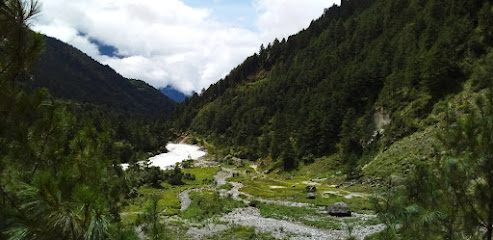
Phakding
5.4 km
Discover the enchanting village of Phakding, a scenic gateway to the Himalayas with breathtaking views, rich culture, and adventure around every corner.
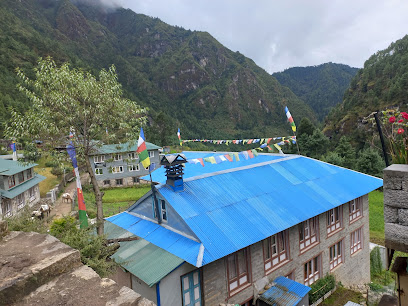
Kari la pass (Phaplu to Everest Base Camp Route)
7.9 km
Experience the breathtaking beauty of Kari La Pass, a stunning hiking area on the Everest Base Camp route, perfect for adventure seekers and nature lovers.
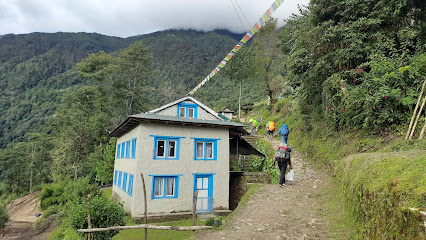
Thamserku
10.9 km
Explore the breathtaking peak of Thamserku in Nepal, an adventure hub that blends stunning landscapes with rich Sherpa culture and unparalleled trekking experiences.
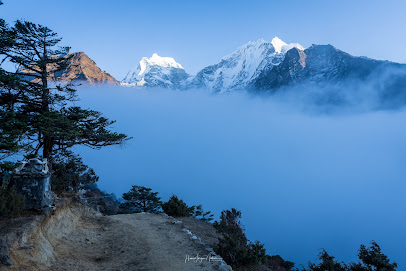
Sub-Himalayan Range
11.7 km
Discover the stunning beauty and rich biodiversity of the Sub-Himalayan Range, a must-visit destination for nature lovers and adventure seekers in Nepal.
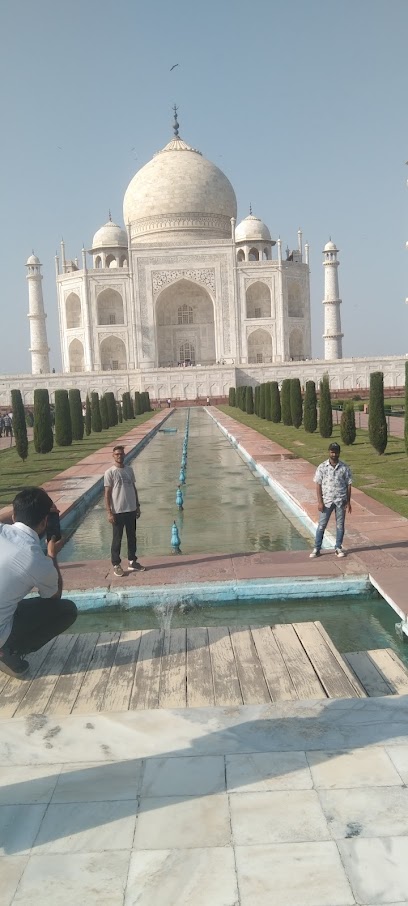
Kirant Momo Chowmin Restaurant
12.0 km
Experience authentic Nepali and Tibetan flavors at Kirant Momo Chowmin Restaurant in Namche Bazar, a must-visit for every traveler in the Everest region.
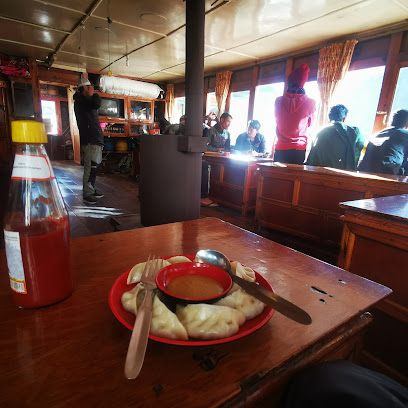
Panorama Lodge and Restaurant
12.0 km
Discover the charm of the Himalayas at Panorama Lodge and Restaurant - your gateway to adventure and culinary delights in Namche Bazar.
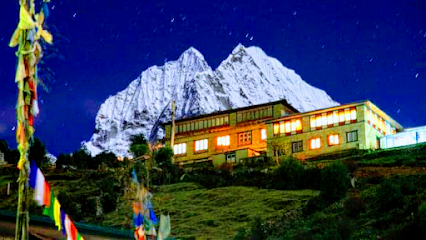
Hotel Kamal
12.0 km
Discover the charm and comfort of Hotel Kamal in Namche Bazar, your ideal base for exploring the majestic Himalayas.

TOMODACHI Restaurant
12.0 km
Experience the authentic flavors of Nepal at TOMODACHI Restaurant in Namche Bazar, where delicious cuisine meets breathtaking mountain views.
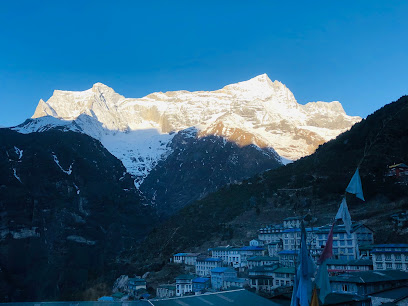
The Bodhi Hotel, Namche
12.1 km
Discover comfort and breathtaking views at The Bodhi Hotel in Namche, the gateway to Everest adventures.

Mountain Lodges of Nepal - Namche
12.1 km
Experience the warmth and comfort of Mountain Lodges of Nepal in Namche, your perfect base for exploring the majestic Himalayas.
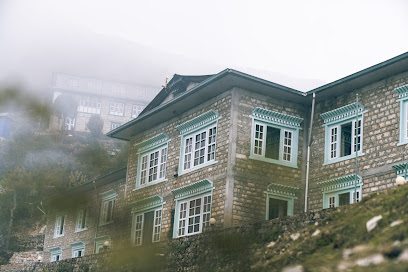
Eat smart
12.1 km
Experience the taste of the Himalayas at Eat Smart, a culinary oasis for trekkers in Namche Bazar, offering hearty meals and warm hospitality.
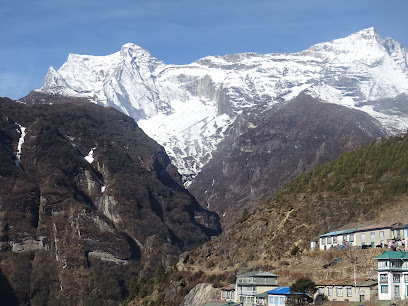
Green Tara Hotel
12.1 km
Discover the tranquil ambiance of Green Tara Hotel in Namche Bazar, your ideal lodge for exploring the Everest region's majestic landscapes.
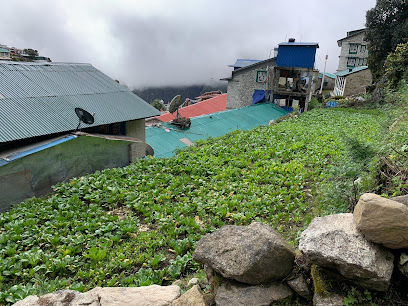
Everest Bakery
12.1 km
Savor the best baked goods in Namche Bazar at Everest Bakery, where every treat is a slice of mountain magic.
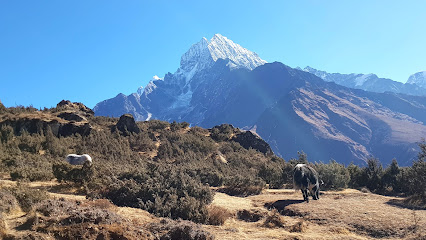
HighCamp Cafe
12.1 km
Discover HighCamp Cafe in Namche Bazar, a cozy eatery offering delicious pizza, coffee, and baked goods amidst breathtaking Himalayan views.
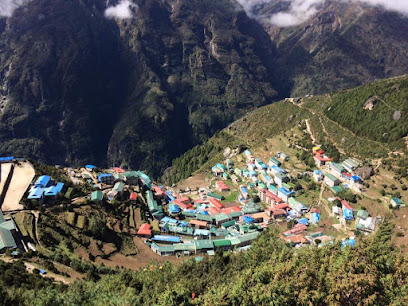
Unmissable attractions to see
Lukla Airport Viewpoint
1.6 km
Discover the stunning vistas of Lukla Airport Viewpoint, your gateway to the majestic Himalayas and a must-see for every adventurer visiting Nepal.
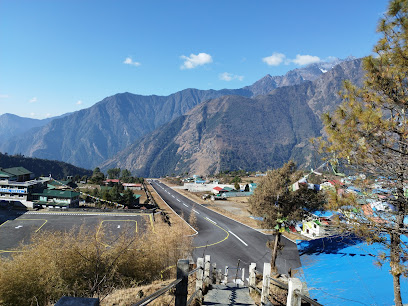
Cheplung Village, Nepal
2.4 km
Explore the authentic charm and rich heritage of Cheplung Village, nestled in the serene Himalayas of Nepal.

Vodopád Handi Khola
2.9 km
Experience the serene beauty of Vodopád Handi Khola, a tranquil waterfall in Chaurikharka, Nepal, that promises breathtaking views and peaceful surroundings.

Toktok Waterfall
7.1 km
Experience the breathtaking beauty of Toktok Waterfall, a hidden gem along the Everest Base Camp trek, nestled in the heart of the Himalayas.
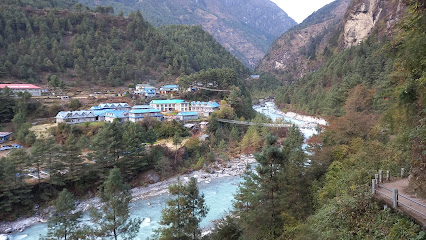
Sagarmatha National Park Jorsalle Entrance Gate
8.5 km
Explore the breathtaking landscapes of Sagarmatha National Park, home to Mount Everest and diverse wildlife, perfect for trekking and adventure.
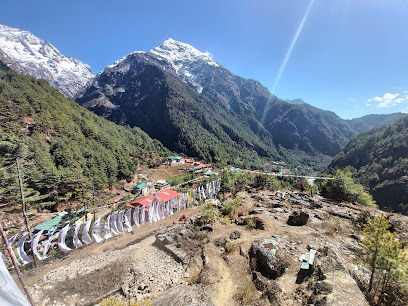
Phuleli Rock Climbing Center
10.3 km
Experience the thrill of rock climbing at Phuleli Rock Climbing Center, surrounded by stunning Himalayan views in Takasindu, Nepal.

Hillary Bridge
10.4 km
Experience breathtaking views and adventure at Hillary Bridge, a stunning suspension bridge on the Everest Base Camp trek in Khumjung, Nepal.
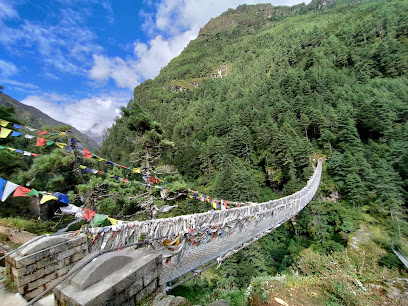
Everest View Point
10.8 km
Experience the awe-inspiring beauty of Mount Everest at the Everest View Point, a must-visit destination for every traveler.
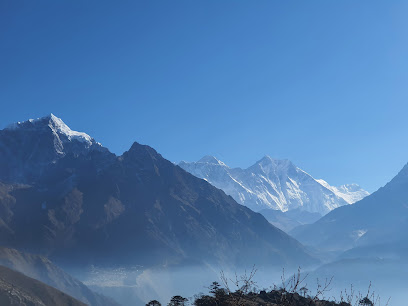
Everest Viewpoint
11.8 km
Experience the breathtaking beauty of Mount Everest at the stunning Everest Viewpoint, a must-visit for every traveler in the Himalayas.
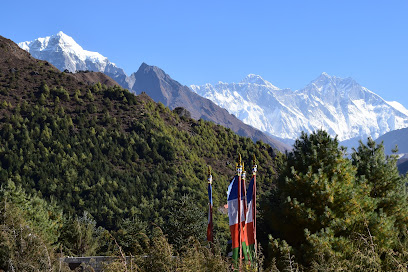
Sagarmatha National Park Museum
11.8 km
Explore the rich heritage and stunning landscapes of Sagarmatha National Park at the Sagarmatha National Park Museum in Namche Bazar.
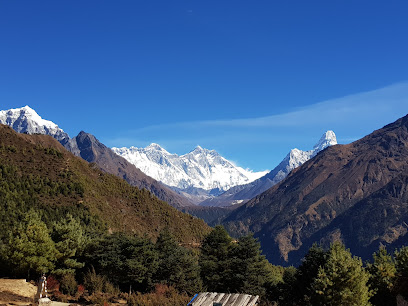
Namche Bazaar Stupa
12.0 km
Discover the serene beauty and spiritual significance of Namche Bazaar Stupa, a must-visit destination in the heart of the Himalayas.
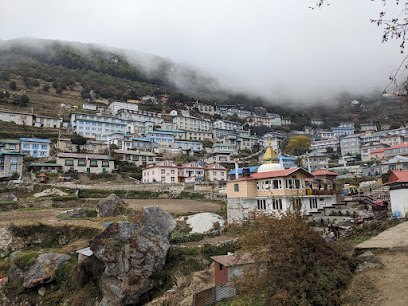
Water-powered Buddhist prayer wheels
12.0 km
Discover the serene beauty of water-powered Buddhist prayer wheels in Namche Bazar, a unique spiritual attraction amidst the majestic Himalayas.
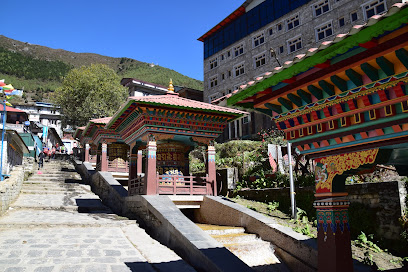
Mount Everest Documentation Center
12.1 km
Discover the history of Everest exploration at the Mount Everest Documentation Center in Namche Bazar, where adventure meets legacy.

Irish Pub
12.1 km
Experience the perfect blend of adventure and relaxation at the Irish Pub in Lukla, your home away from home on the Everest Base Camp trekking route.
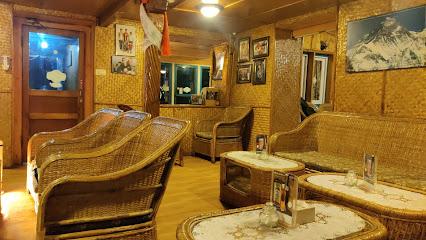
Sherpa Culture Museum
12.1 km
Explore the essence of Sherpa life at the Sherpa Culture Museum, where heritage meets adventure in the heart of the Himalayas.
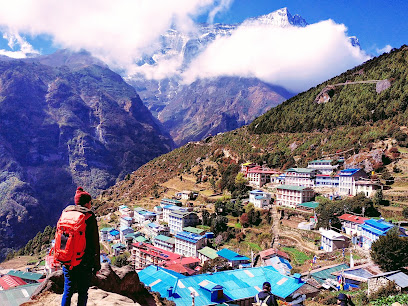
Essential places to dine
Everest Momo Restaurant
1.6 km
Experience authentic Himalayan flavors at Everest Momo Restaurant on your trek to Everest Base Camp.
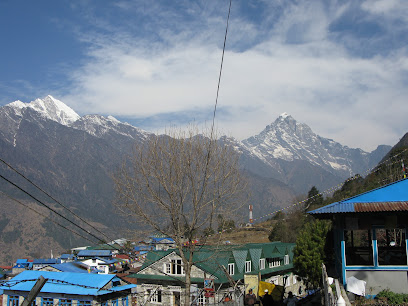
Zambala Lodge & Restaurant Lukla
1.6 km
Experience warm hospitality and authentic Nepali cuisine at Zambala Lodge & Restaurant in Lukla - your gateway to Everest Base Camp.
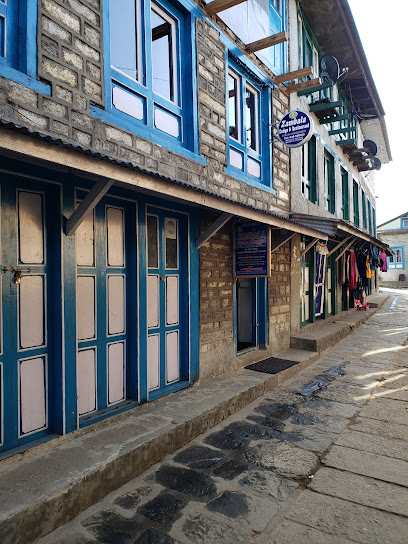
Lukla Restaurant
1.6 km
Experience authentic Nepali cuisine at Lukla Restaurant, your culinary haven on the way to Everest Base Camp.
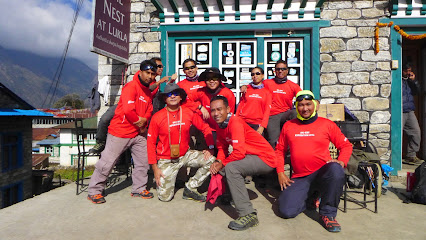
Tea Shop And Momo Centre
1.6 km
Experience authentic Tibetan flavors at Tea Shop and Momo Centre on your Everest Base Camp trek – enjoy delicious momos and refreshing tea.

Sherpa Restaurant
1.6 km
Discover authentic Nepali flavors at Sherpa Restaurant along the breathtaking Everest Base Camp trek.
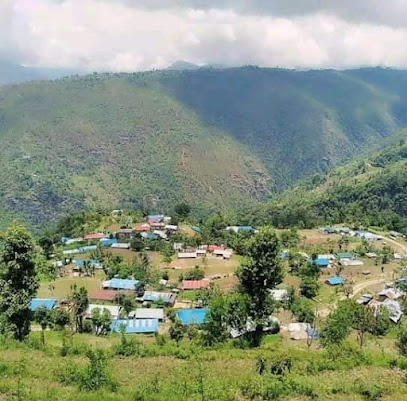
Hotel Yunjung
1.6 km
Experience authentic Nepali cuisine at Hotel Yunjung, your culinary retreat along the Everest Base Camp trek.
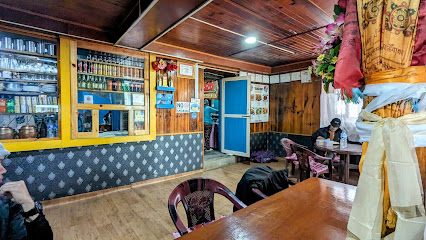
Solu Khumbu Restaurant
1.6 km
Experience authentic Nepali cuisine at Solu Khumbu Restaurant in Lukla, where flavor meets adventure along the Everest trekking route.
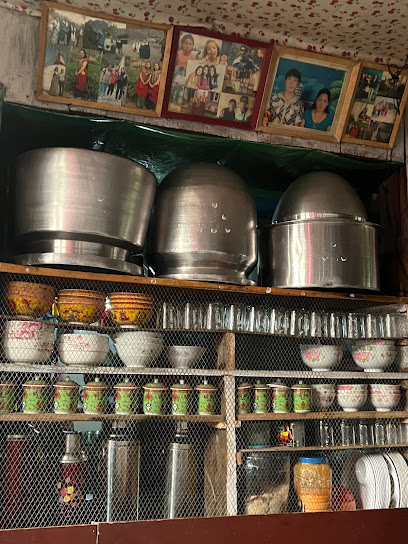
Everest kitchen
1.7 km
Experience authentic Nepali cuisine at Everest Kitchen near Tenzing Hillary Airport, perfect for trekkers exploring the majestic Himalayas.

Everest Trekkers Lodge & Restaurant
2.4 km
Discover culinary delights at Everest Trekkers Lodge & Restaurant, your perfect stop along the breathtaking trek to Everest Base Camp.
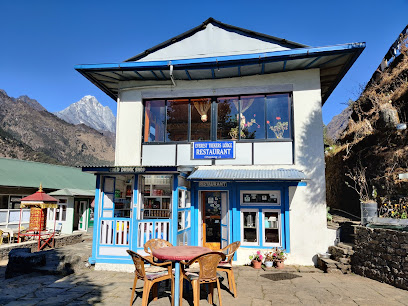
Rokpa guest house
2.9 km
Discover authentic Nepali cuisine at Rokpa Guest House along the breathtaking Everest Base Camp trek.
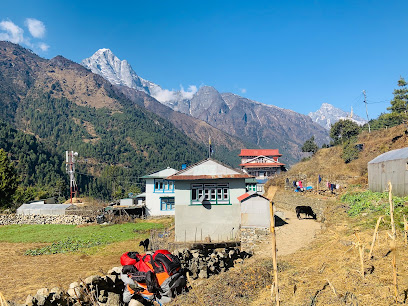
Mountain River view restaurant
2.9 km
Experience authentic Nepalese cuisine amidst breathtaking mountain views at Mountain River View Restaurant in Chaurikharka.

Green view point & Restaurant
3.1 km
Experience breathtaking views and authentic Nepali cuisine at Green View Point & Restaurant in Chaurikharka.
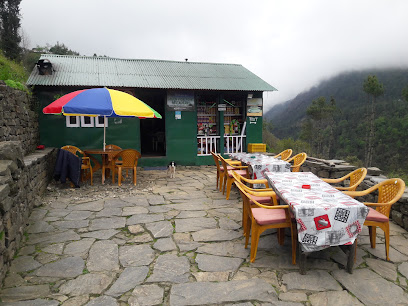
Best Momo Restaurant
3.7 km
Discover the heart of Nepali cuisine at Best Momo Restaurant in Chaurikharka—home to mouthwatering momos and warm hospitality.

Hotel Surkey Helipad
4.1 km
Discover delightful dining at Hotel Surkey Helipad along the breathtaking Everest Base Camp trekking route - where adventure meets authentic Nepali flavors.
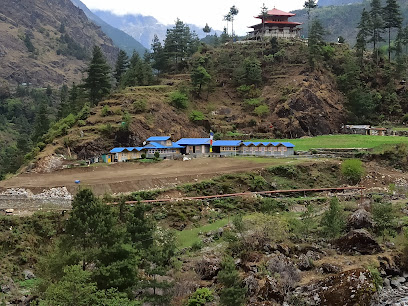
See You Lodge & Restaurant
5.2 km
Discover comfort and authentic Nepali cuisine at See You Lodge & Restaurant in scenic Phakding.
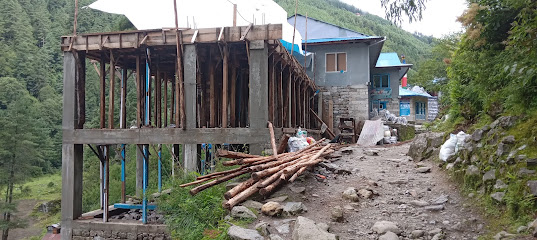
Markets, malls and hidden boutiques
Sanu Kirana Pasal
1.6 km
Discover essential supplies at Sanu Kirana Pasal, your go-to grocery store on the Everest Base Camp trekking route in Lukla.

Caravan Souvenir Shop
1.6 km
Explore the Caravan Souvenir Shop in Lukla for authentic treasures that capture the spirit of the Everest region, perfect for every traveler.
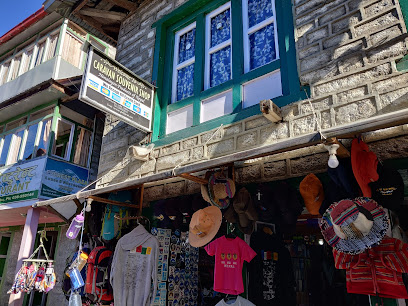
TASHI YANGJOM GROCERY AND LIQUOR SHOP
1.6 km
Discover Tashi Yangjom Grocery and Liquor Shop in Lukla, your go-to destination for essentials and local flavors along the Everest Base Camp Trek.
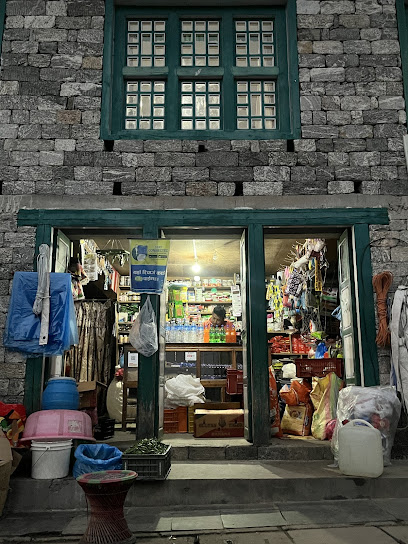
Grocery Shop
1.6 km
Explore the Everest Base Camp trek with essential supplies from the Grocery Shop, your trusted stop for all trekking needs in the Himalayas.
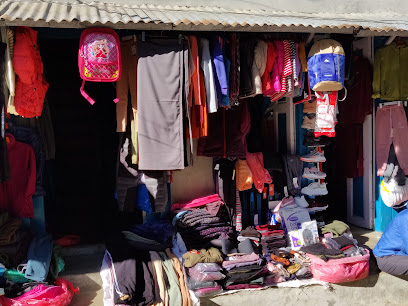
Variety Trekkers Shop
1.6 km
Gear up for your epic journey to Everest Base Camp at Variety Trekkers Shop in Lukla, your go-to destination for quality trekking equipment.

Lukla Outdoor
1.6 km
Discover quality outdoor gear at Lukla Outdoor, your essential stop for trekking supplies before conquering the Everest Base Camp.
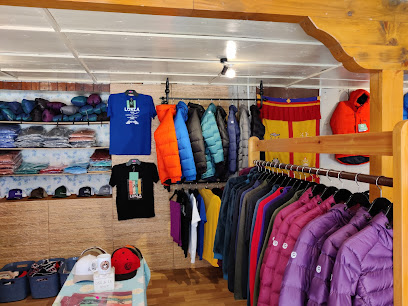
EVEREST RETAIL SHOP
1.6 km
Discover unique trekking gear and authentic Himalayan crafts at Everest Retail Shop in Lukla, the gateway to the majestic Everest Base Camp.
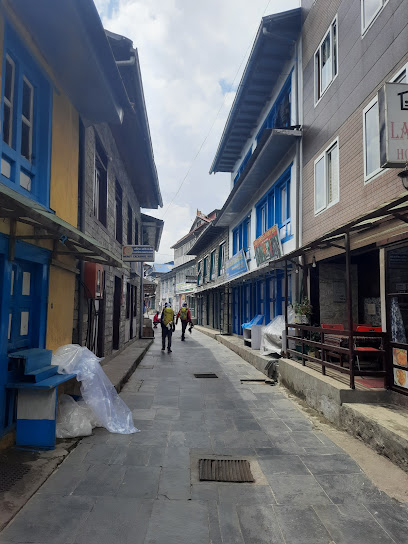
Serki Electronic shop
1.7 km
Discover the best electronic essentials at Serki Electronic Shop in Lukla, the perfect stop for trekkers heading to Everest Base Camp.

Shyam Electronic Store
12.0 km
Discover essential electronics at Shyam Electronic Store in Namche Bazar, your go-to spot for gadgets on the Everest trekking route.

Local Market
12.0 km
Experience the vibrant Local Market in Namche Bazar, a hub of Sherpa culture filled with handicrafts, fresh produce, and lively atmosphere.
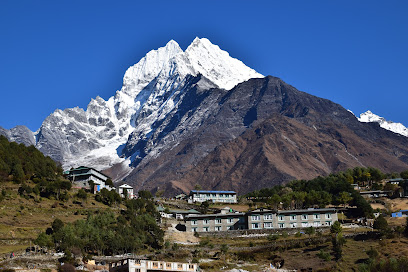
Stupa Cafe
12.0 km
Discover the serene ambiance of Stupa Cafe in Namche Bazar, where exceptional coffee meets breathtaking Himalayan views.
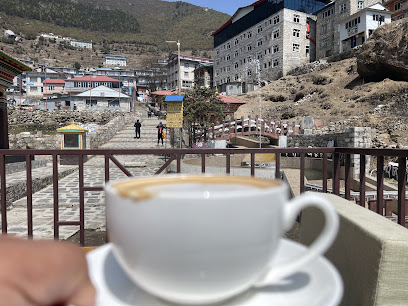
Namche Gear
12.0 km
Discover Namche Gear for all your trekking apparel and equipment needs in the heart of Namche Bazaar, Nepal's gateway to Everest.

NEPAL EXPLORE(नेपाल एस्प्लोर )
12.0 km
Explore the vibrant fashion scene of Nepal at Nepal Explore, where local craftsmanship meets modern style in the heart of Namche Bazar.

EVEREST GEAR
12.0 km
Discover high-quality outdoor gear and apparel at Everest Gear in Namche Bazar, your essential stop for Himalayan adventures.

Everest Yak
12.0 km
Discover unique handcrafted souvenirs and local artwork at Everest Yak in Namche, the perfect stop for trekkers exploring the Everest region.

Essential bars & hidden hideouts
The Local Cheer's & Beer's Pub
1.6 km
Experience the warmth of The Local Cheer's & Beer's Pub in Lukla, the perfect spot for trekkers to unwind with local brews and hearty meals.

Center Point Snooker and Bar
1.6 km
Discover the perfect blend of relaxation and adventure at Center Point Snooker and Bar, the ideal retreat for trekkers in Chaurikharka.

The Waves Pub
1.6 km
Experience the vibrant atmosphere of The Waves Pub, a must-visit stop on your Everest trek, offering local brews and stunning mountain views.
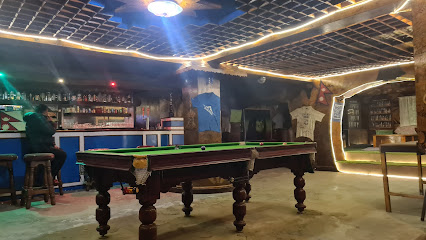
The Irish Pub
1.6 km
Experience the warmth of The Irish Pub along the Everest Base Camp trek, where hearty meals and local drinks await weary adventurers.
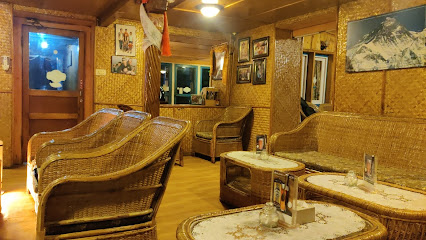
Scottish Pub
1.6 km
Experience the spirit of adventure and camaraderie at the Scottish Pub, a beloved retreat for trekkers on the Everest Base Camp route.
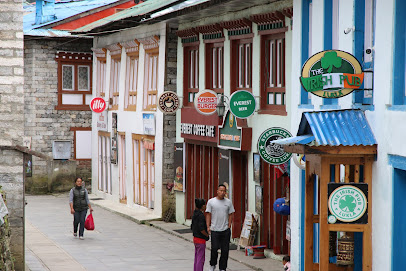
Darjeeling Exotic Lodge Restaurant and Bar
5.2 km
Discover the Darjeeling Exotic Lodge Restaurant and Bar, offering delightful cuisine and stunning views along the Everest Base Camp trek.
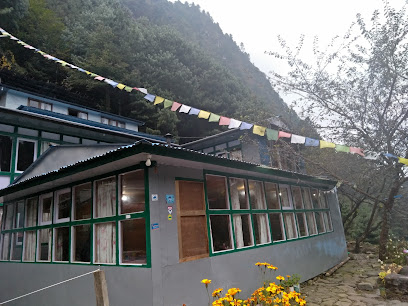
THE IRISH BAR And Phakding View Point Cafe
5.4 km
Experience the warmth of The Irish Bar & Phakding View Point Cafe, where local flavors meet breathtaking Himalayan views in the heart of the Everest trek.
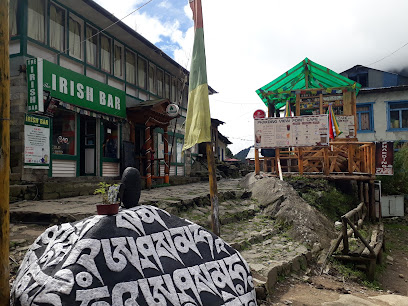
Reggae Bar
5.4 km
Discover the lively atmosphere of Reggae Bar in Benkar - a perfect blend of local culture, music, and refreshing drinks.
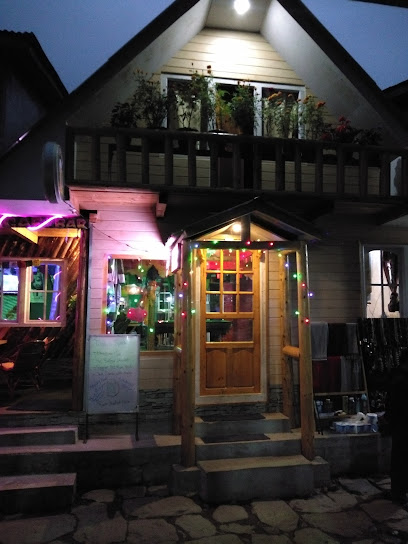
Lali guras guest house
12.0 km
Experience the charm of Lali Guras Guest House in Namche Bazar, where local culture meets breathtaking mountain views, perfect for trekkers and travelers alike.

Cafe Danphe Bar
12.1 km
Discover the charm of Cafe Danphe Bar in Namche Bazar, where trekkers unite for delightful drinks and breathtaking mountain views.

Yeti Bar
12.2 km
Experience the vibrant atmosphere of Yeti Bar in Namche Bazar, where adventure meets relaxation in the heart of the Himalayas.

Everest Summiter Lunch Place
14.7 km
Experience authentic Nepali cuisine at Everest Summiter Lunch Place, where every meal is accompanied by breathtaking views of the Himalayas.
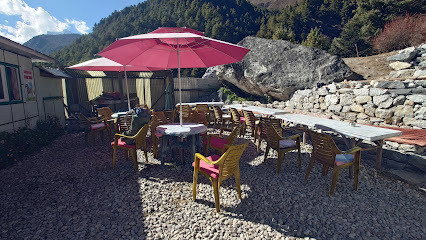
Restaurant bridgev
14.8 km
Experience authentic Nepali cuisine at Restaurant Bridgev, where breathtaking Himalayan views and warm hospitality meet.
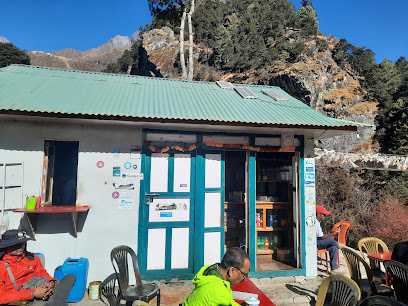
Dole View Point Lodge & Restaurant
15.6 km
Experience breathtaking views and authentic Nepalese cuisine at Dole View Point Lodge & Restaurant, a gem along the Gokyo Ri Trekking Trail.
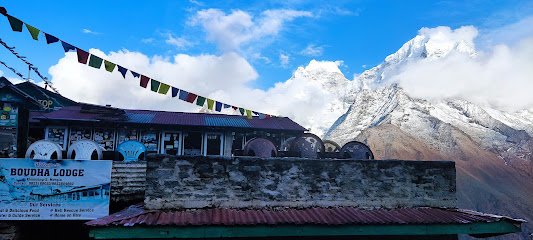
Juneli lodged
19.8 km
Experience the warmth of Nepalese hospitality at Juneli Lodge, the perfect dining retreat along the breathtaking Everest Base Camp Trek.




